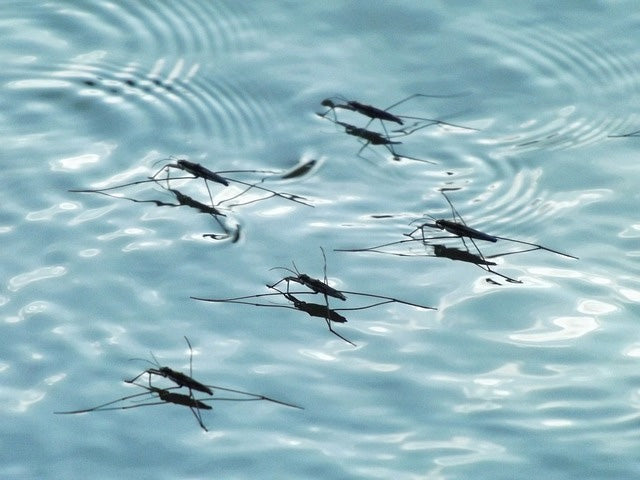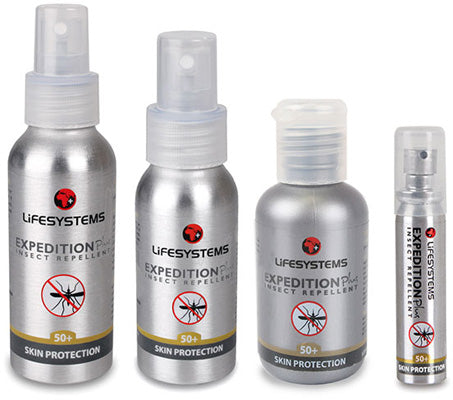Have you got the right insect repellent?
- Blog

A good insect repellent should be near the top of the list of things to pack when you’re heading abroad, especially to hot countries. With malaria, dengue fever, and a host of other insect-spread diseases, it’s not just the irritating bites you want to avoid; it’s more serious health implications, too.
Different Types
DEET
In very simple terms, there are two categories of effective insect repellent; those containing DEET (also known as Diethyltoluamide), and those without.
DEET is one of the most common active ingredients in modern repellents, can be applied to skin or to clothing, and holds powerful repellent properties against mosquitoes, ticks, fleas, leeches, and more. Originally developed for use by the US military, DEET repellents are usually sold as sprays or lotions in concentrations of up to 100%. Due to its potency, strong DEET solutions are not recommended for those with sensitive or damaged skin, nor for very young or elderly users.
It’s also an effective solvent so whilst it’s going to keep those biting blighters at bay, you will want to keep DEET from coming into contact with plastics, paints or varnishes, and other synthetic fabrics.
Expedition 50+ DEET Insect Repellent Range from £3.99
DEET-Free
DEET-Free repellents use a different active ingredient, such as Saltidin ( like in our Expedition Sensitive range). Otherwise known as Icaridin, this is a repellent which is effective against a broad range of insects. Colourless and odourless, some studies have reported it to be as effective as DEET repellents, but with a much lower risk of skin irritation, it also does not act as a solvent on plastics or fabrics.
Another DEET-Free solution such as Lifesystems Natural Insect Repellent is formulated from a blend of natural oils derived from the Lemon Eucalyptus plant, and each application will last up to 8 hours. This natural option is suitable for children over 2 years old and provides mid-level protection.
Other Options
There are other alternatives to sprays and lotions, too. Electronic repellent devices can help protect you. For example, our own Portable Insect Killer Unit emits a scent effective at keeping mosquitoes at bay in your tent or room.
Where will you need it?
Biting bugs, for example mosquitoes, thrive in a variety of habitats, but hot and humid places tend to be the most common. Mosquitoes congregate around water bodies, where they reproduce and lay their eggs. They also source food from aquatic environments, so particularly areas of stagnant (non-flowing) water are likely to be the ideal home for a mosquito colony.

Image from MyBugProblem.com
Saying that, it’s not just hot and humid places that harbour mosquito populations; many of them are thriving in the Arctic. Knowing this, you may wish to take a bottle or two of insect repellent with you, wherever you are travelling.
Applying your repellent properly
With sprays and lotions, make sure you cover all skin that is showing and not covered by clothing. Don’t forget the back of your neck, and ankles; spots where the blood flows closest to the skin make particularly tasty snack spots for the peckish pests.
For treating fabrics (such as clothes, sleeping bags and mosquito nets), use a permethrin-based spray, which will add an extra layer of protection for you.
Lastly…
Last but not least, if you do manage to procure a bite, you can ease irritation by placing an ice cube or cold facecloth on it. Don’t scratch it, you’ll spread the irritant under the skin and prolong the time it takes for the bite to heal. Lifesystems offer a bite relief clicker which can help ease itching with a quick snap of a button and also more traditional sprays.
If you notice that you happen to feel poorly a few days after you have sustained a bite (particularly high temperature, sweats and chills, headaches, vomiting or muscle pains), make it your priority to visit a doctor. 1500 Brits return to the UK annually having contracted malaria abroad. Note that malaria can lay dormant for up to a year after you’ve contracted the disease. Other warning signs to look out for include a lot of swelling and/or blistering.
For more information on malaria and other tropical diseases, visit the NHS website.
Be prepared and enjoy your adventures.
All prices correct on date of publish.




